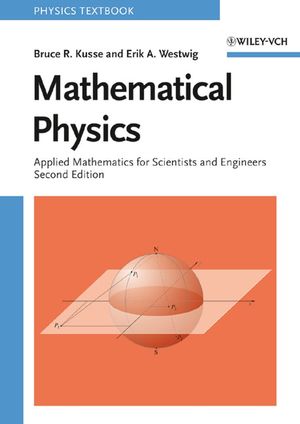Mathematical Physics: Applied Mathematics for Scientists and Engineers, 2nd EditionISBN: 978-3-527-40672-2
Paperback
689 pages
March 2006
 This is a Print-on-Demand title. It will be printed specifically to fill your order. Please allow an additional 10-15 days delivery time. The book is not returnable.
|
||||||
What sets this volume apart from other mathematics texts is its emphasis on mathematical tools commonly used by scientists and engineers to solve real-world problems. Using a unique approach, it covers intermediate and advanced material in a manner appropriate for undergraduate students. Based on author Bruce Kusse's course at the Department of Applied and Engineering Physics at Cornell University, Mathematical Physics begins with essentials such as vector and tensor algebra, curvilinear coordinate systems, complex variables, Fourier series, Fourier and Laplace transforms, differential and integral equations, and solutions to Laplace's equations. The book moves on to explain complex topics that often fall through the cracks in undergraduate programs, including the Dirac delta-function, multivalued complex functions using branch cuts, branch points and Riemann sheets, contravariant and covariant tensors, and an introduction to group theory. This expanded second edition contains a new appendix on the calculus of variation -- a valuable addition to the already superb collection of topics on offer.
This is an ideal text for upper-level undergraduates in physics, applied physics, physical chemistry, biophysics, and all areas of engineering. It allows physics professors to prepare students for a wide range of employment in science and engineering and makes an excellent reference for scientists and engineers in industry. Worked out examples appear throughout the book and exercises follow every chapter. Solutions to the odd-numbered exercises are available for lecturers at www.wiley-vch.de/textbooks/.
This is an ideal text for upper-level undergraduates in physics, applied physics, physical chemistry, biophysics, and all areas of engineering. It allows physics professors to prepare students for a wide range of employment in science and engineering and makes an excellent reference for scientists and engineers in industry. Worked out examples appear throughout the book and exercises follow every chapter. Solutions to the odd-numbered exercises are available for lecturers at www.wiley-vch.de/textbooks/.
Instant access to textbooks as eTextbooks. Learn more at coursesmart.com




